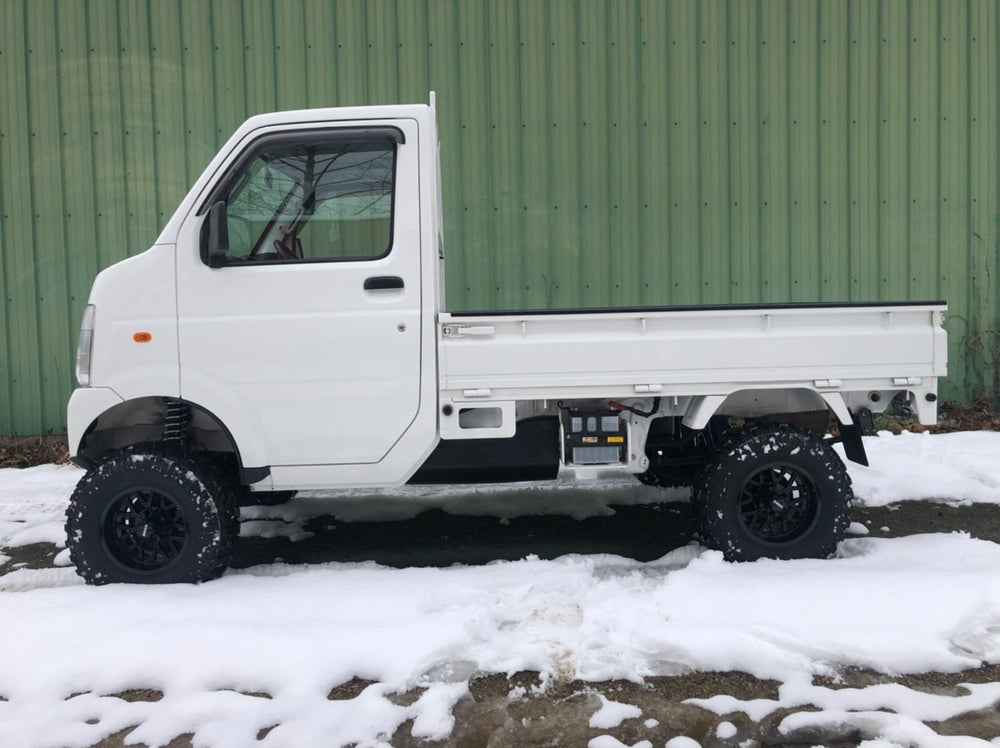Kei vehicles are a distinct and essential element of Japan's automotive culture. Small yet surprisingly capable, these mini trucks have captured the interest of fans and practical users alike. Originally designed for efficient transport in metropolitan environments, kei trucks have evolved over the years to demonstrate their adaptability beyond mere work vehicles. From job sites to outdoor activities, they are becoming increasingly popular internationally for their functionality and charming design.
What sets kei trucks distinguishes them from traditional light trucks is their size and efficiency. They are limited in size and engine displacement, making them particularly nimble on tight roads and congested streets. Their compact size does not compromise on utility, as many models offer impressive cargo limits and versatile cargo solutions. As recreational lifestyles gain popularity, more people are finding the joys of using kei trucks for leisure pursuits, from off-roading to outdoor stays, transforming these functional trucks into adventurous rides.
Chronicles of Kei Trucks
Kei vehicles, a distinctive vehicle category in Japan, came into existence in the aftermath of World War II during the 1950's. As the country strived to revitalize its economy, the necessity of cost-effective and practical transportation solutions became critical. The Japanese government introduced regulations to create small, economical vehicles that could accommodate both individual and commercial use, leading to the launch of the kei truck. These miniature trucks were designed to be light, fuel-efficient, and easy to navigate through busy urban environments.
Throughout the 1960s and 1970s, kei trucks achieved immense recognition as they offered a great combination of practicality and economy. They were commonly embraced by minor companies and farmers for local deliveries and transporting goods. The kei truck's compact dimensions also permitted it to operate through constricted streets, making it a preferred choice for urban landscaping and construction. Various producers, including Suzuki Co., Daihatsu, and Mitsubishi Group, began manufacturing their iterations, each adding unique features and styling to appeal to different markets.
As Japan's economy expanded in the last part of the 20th century, kei trucks continued to develop and adapt. With advancements in technology and shifts in lifestyle, these vehicles commenced to incorporate modern features while still retaining their core characteristics. By the 1990's, kei trucks were not only used in agribusiness and commerce but also gained traction among recreational users, becoming well-liked for weekend adventures and outdoor activities. This shift solidified the kei truck 's status as a multifaceted vehicle suitable for both labor and leisure.
Effective Applications of Kei Trucks
Kei trucks are incredibly flexible vehicles that address a diverse array of real-world needs. Their compact size makes them well-suited for maneuvering through tight spaces in urban environments, making them a popular choice for local business owners who require reliable transport for goods. From local farms utilizing kei trucks to carry produce to delivery services delivering packages, these vehicles shine in environments where larger trucks would face challenges.
Nature enthusiasts also find kei trucks to be important assets. Their sturdy build and four-wheel drive capabilities enable them to tackle difficult terrains, which is perfect for camping trips, off-roading adventures, or carrying gear to remote locations. Additionally, kei trucks often feature flatbeds, providing plenty of space for equipment, bicycles, or recreational gear, enhancing their appeal for those who enjoy an outdoor lifestyle.
Moreover, kei trucks serve as outstanding workhorses in different industries. Construction sites often employ them for moving tools and materials due to their ability to maneuver in restricted spaces. Craft vendors appreciate their practicality for carrying merchandise to markets or events, making kei trucks a preferred choice among skilled tradespeople and artisans. Their functional design and cost-effective efficiency contribute to their status as an crucial vehicle in numerous professional settings.
Adapting Kei Vehicles for Fun
Mini trucks are widely known for their efficiency in urban environments, but their adaptability extends well into recreational uses. The petite form and easy-to-handle structure of kei trucks make them perfect for recreational trips. Whether it’s taking a trip to the beach, visiting a campground, or exploring off-road trails, these vehicles provide the ideal mix of practicality and leisure. Their ability to fit into small areas and maneuver easily means they can access locations where larger trucks would struggle.

Another attractive feature of kei vehicles is their ease of customization. Owners can adjust their kei vehicles to better fit recreational use by including elements such as roof racks for bicycles, personalized storage compartments for outdoor equipment, or even retrofitting the inside for more comfortable drives. These customizations enhance the truck's utility and make weekend outings more pleasant. The small load bed can also be outfitted with removable units to carry everything from food containers to angling equipment, making it a versatile companion for explorers.
In besides upgrades, kei trucks often come with features that enhance their recreational value. Many models are fitted with cozy seats and efficient engines, allowing for enjoyable rides whether on urban roads or rural pathways. With their distinctive look and charming aesthetics, kei trucks shine as both useful tools and trendy adventure vehicles, making them perfect for those looking to blend practicality with recreational interests.
